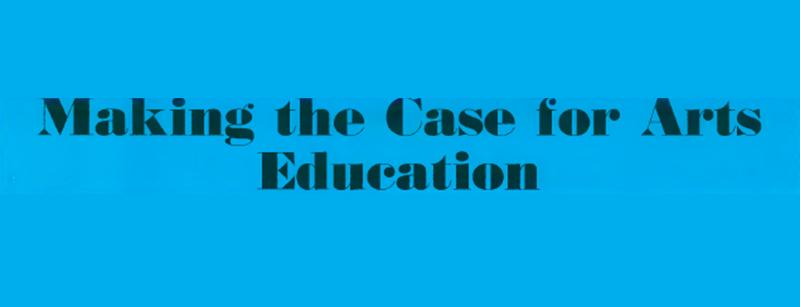
Making the Case lor Arts Education
Ontario politicians, through the Common Sense Revolution, are attempting to restructure and revise education and curriculum with the release of a so-called "more rigorous" curriculum. Unfortunately, the absence of authorship and informed pedagogy in the latest Language, Math and now Arts documents for elementary schools is evidence these proposed changes will be minimal at best.
Again, the age-old argument surrounding the existence and significance of the arts in education surfaces. Many people consider the arts to be a frill, or more often, a source of amusement and leisure time activity. For years, arts advocates have known the arts in education enrich the lives of students, providing them with an outlet for their creative expression, developing their aesthetic senses and opening their minds to a full range of human experience. The arts enable students to see, feel, hear and express the beauty inherent in shape, colour, harmony, texture and movement.
Many people, like the author of the above Letter to Editor, still feel the arts divert attention and resources from other subject areas that prepare students for the competitive workplace and the prospect of high-paying jobs.
In defense of the arts in education, the Ontario Arts Council (OAC) has prepared a shield for educators. Entitled Making the Case for Arts Education, this 80 page document was prepared by Steven Campbell, Arts Education Officer, and Kathryn Townsend, Research and Policy Manager, for the OAC. The guide
summarizes research and trends in arts education and is designed to assist local advocates for arts education.
The authors believe Making the Case for Arts Education provides teachers, artists, parents and others who lieve in the value of ar cation the hard data the need to make a persuasive case and to influence the changes taking place in Ontario schools."
Most of the data and research found in the document's opening "Message" section comes from American studies. Here are just three examples of that data:
- Five hundred students in Grades 4 to 9 (from 65 classes in 11 schools) who participated in an artist-in-residence program, sponsored by the Music Centre of Los Angeles County, reported improvements in higher-order thinking, communication and socialization skills. The marks on their report cards also improved.
- A group of 615 elementary school students in Ohio participated in a two year evaluation of SPECTRA+, an arts education program that gives students one hour of arts instruction daily. Based on standardized tests, SPEC- TRA+ students demonstrated gains in creativity, self-esteem, math, reading and arts appreciation that children in control groups did not achieve.
- In a study at the University of California, Irvine, preschoolers who received daily music lessons for eith months scored 80% higher in spatial intelligence than children who did not have lessons.
Full intellectual development requires more than literacy and numeracy skills. Making the Case for Arts Education also highlights work of Harvard developmental phsychologist Howard Gardner who has identified at least seven basic intelligences which work together. To develop fully, Gardner says, people need to develop all seven intelligences:
- Verbal-linguistic - language and words;
- Logical-mathematical - numbers, patterns and scientific thinking;
- Visual-spatial - visualization and the ability to create mental images;
- Body-kinesthetic - physical movement;
- Musical-rhythmic - sounds, rhythms, beats and tonal patterns;
- Interpersonal - cation; person-to-person relationships; and
- Intrapersonal - self-reflection.
The messages are clear. The arts help children develop higher level skills (creativity, problem-solving, self-discipline, critical thinking and communication skills) that are essential to success in the workplace. According to the 1991 census over 348,000 Canadians work in the Arts or cultural occupations and that figure is growing. Arts education assists students to learn other subjects too. Students educated through the arts are more motivated, have a more positive attitude towards learning and often show marked improvement in the 3Rs and their academic marks.
So what can schools do to ensure strong, effective and innovative arts education programs in their schools? The "Action Plan" and "Resource" section in Making the Case for Arts Education provides some strategies and suggestions for Arts Advocacy. It describes and recommends effective partnerships between schools and arts communities, the need for better teacher training and support in the arts and the tapping in of the valuable knowledge and expertise of professional artists. An extensive bibliography provides some excellent reports and advocacy publications.
"We believe the skills the arts teach - creative thinking, problem solving and risk taking, teamwork and communications - are precisely the tools the work force of tomorrow will need.." (Richard Gurin, President and CEO of Binney & Smith Inc. Educating for the Workplace Through the Arts. Business Week, October 1996).
Copies of Making the Case for Arts Education are available free of charge from OAC Communications, 151 Bloor Street West, 6th Floor, Toronto M5S IT6. Fax: (416) 921-8763. E-Mail: infor@arts.on.ca. Order direct from the web via www.arts.on.ca.
Jim Giles is team teaching a Primary Multiage Family Grouping class at Sir Wilfrid Laurier Public School, Brampton. He also teaches drama for the Primary/Junior Additional Qualifications (AQ) Course (University of Toronto) and the Integrated Arts AQ Course (York University).

